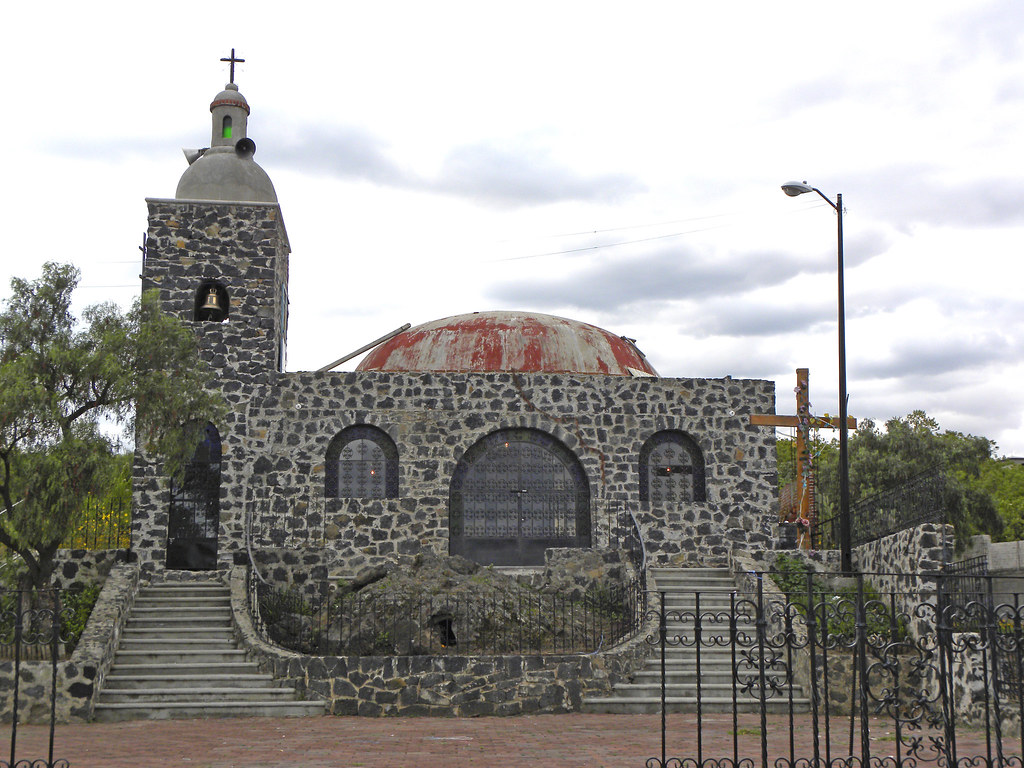
The Capilla Olla de Piedra (The Chapel of the Stone Pot) is more than just the namesake of Tecómitl. Obviously, you’ll see references to “Olla de Piedra” in the Cultural Center that’s become the FARO Milpa Alta. And that will be just one of the places you’ll see the name.
Of Nahuatl origin, Tecómitl derives from the word tecome. This is believed to be a form of the word tecomic, from tetl-stone, comitl-pot and co-in. Hence, the town name is thought to mean “in the stone pot.” When you’ve arrived at the Chapel of St. Anthony, you’ve come to the original “Stone Pot.” This was a natural hollow formed in the lava that had come from the Teutli volcano. Having erupted some tens of thousands of years previously, the lava then solidified with a bubble in it. This then became a significant hollow of solid, and iron-hard, rock.
The site of the current chapel is believed to have been a ceremonial site where ancient inhabitants sought fertility for their farms and livelihoods. The Teuhtli Volcano, which is apparent on any visit to the chapel, is alive with a whole number of legends and tales still told today.
This legend was later adapted to meet the needs of the Christian colonial era. Maguey workers in the fields heard the cry of a child. This persisted for some number of days. Eventually the workers began an intense search. One of them moved a stone covering the opening of the Stone Pot. Inside, the origin of the sound was obvious. A man in a friar’s habit holding a child. With some haste, the workers let the Franciscan friars know what they’d found. It was revealed to be a statue of Saint Anthony of Padua. He was holding none other than the Christ child. Thus, Anthony became the Patron Saint of the community and the events described are still celebrated, even today.
Construction of the Olla de Piedra chapel began soon after. (The year does not seem to have been recorded.) Built with the same hard volcanic stone, the chapel protects the stone pot, and much of the legacy of the town. The celebrations start on June 11. The Saint Anthony statue gets decorated by florists. A procession then returns the statue and most of the town’s people to this very chapel for vigils that last well into the morning of June 13th.
It can seem a bleak and forlorn little plaza. Inside, the legends are warm and the history is quite alive. Don’t miss it.
__
Sources cited on this page:
WikiCity: Capilla Olla de Piedra
El color de la fe: Diego Rodarte; El hallazgo en la olla de piedra

Nearest at 0.67 kms.

Nearest at 1.25 kms.
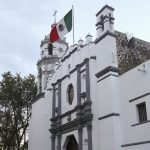
Nearest at 1.33 kms.
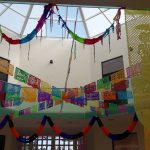
A cultural center in combination with the town tianguis...

A classic neighborhood market in San Bartolomé
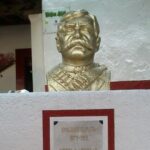
A glimpse into the lives of the Revolutionary Zapatista Army, a museum in Milpa Alta is not to be missed.
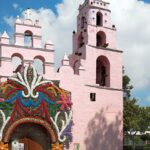
A magnificent little chapel dedicated to Saint Martin, it's often enough painted bright pink.

One of the country's most spectacular national parks takes up a massive part of the south of the City.